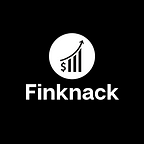Hello! In this article, we will take a look at the “Book Value and Market Value”. Through this article, I will give a glimpse of Book Value & Market Value. This is my second article on “Face Value, Book Value and Market Value of a share.” In the last article, we discussed some basic terminologies related to the above-mentioned quantities and the Face Value of a share. If you haven’t read that article, I would strongly suggest going through that article before reading this. I have attached the link to the previous article here.
Before getting into the article, I would like to discuss some more technical terminologies. So that it could help you to analyze a stock in a better way.
Balance Sheet: A balance sheet is a financial statement that records a company’s financial transactions.
Liabilities: Liabilities are a company’s owes, usually include loans, accounts payable, bonds, tax payable.
Assets: An asset is a resource owned by a company that can produce a positive economic value for the company.
Assets= Tangible Assets + Intangible Assets
Let’s get into our topic for today, which is “Book Value & Market Value of a share.”
Book Value:
I will take a simple case study to make you understand Book Value. Let’s take a company called “Awesome Foods.” Awesome Foods manufactures Snacks & Beverages. In Awesome Foods, Their intangible assets (i.e, Trademarks, goodwill, copyright) value is 20 lakh. Their tangible assets (i.e, cash, Shares, Inventory, equipment, land, etc.) value is 15 crore. The liabilities (refer to definition) cost is 2 crores.
For Awesome Foods company, The asset value is(i.e, tangible Assets + Intangible Assets) is
20,00,000+15,00,00,000=15,20,00,000 (15.2 crores)
Hope you understood, above-mentioned simple case study, If you still have any doubts regarding the case study please feel free to ask your questions in the comment section. Now, let’s define The classic Book value definition.
Book Value: Book Value is defined as, The net difference between total assets and total liabilities that gives the book value of a company.
From the above-mentioned case study, The Book Value of Awesome Foods is
15,20,00,000–2,00,00,000 = 13,20,00,000
Book Value is often observed to be lower than the company’s assets
Book Value is also referred to as, “Net Book Value” and in the U.K., “net asset value of the firm.”
Hope you understood Book Value. If you still have any doubts regarding Book Value. Please feel free to ask your questions in the comment section.
Market Value:
Market Value is defined as, Price of the company asset in the Market. It is calculated by multiplying outstanding shares and the current market price of a share. It is also known as “Open Market Valuation.” It is commonly referred to as market capitalization for a publicly traded company. The market value is dynamic, It changes widely according to the Market behavior.
If the stock Market Value is less than the Book Value, then the company is undervalued in the Market.
If the stock Market Value is greater than the Book Value, then the company is valued in the Market.
So, I hope you understood Book Value and Market Value. In the next article, we will cover different types of quantities like Book Value per share(BVPS), Price-to-book Ratio, Tangible Book Value per share(TBVPS), Price-to-sales ratio(P/S ratio), Q ratio. These quantities help us to analyze the Profits of the company, and we use the Face Value, Book Value and Market Value of the company to understand these quantities.
Thank you!
Have a nice day :)
